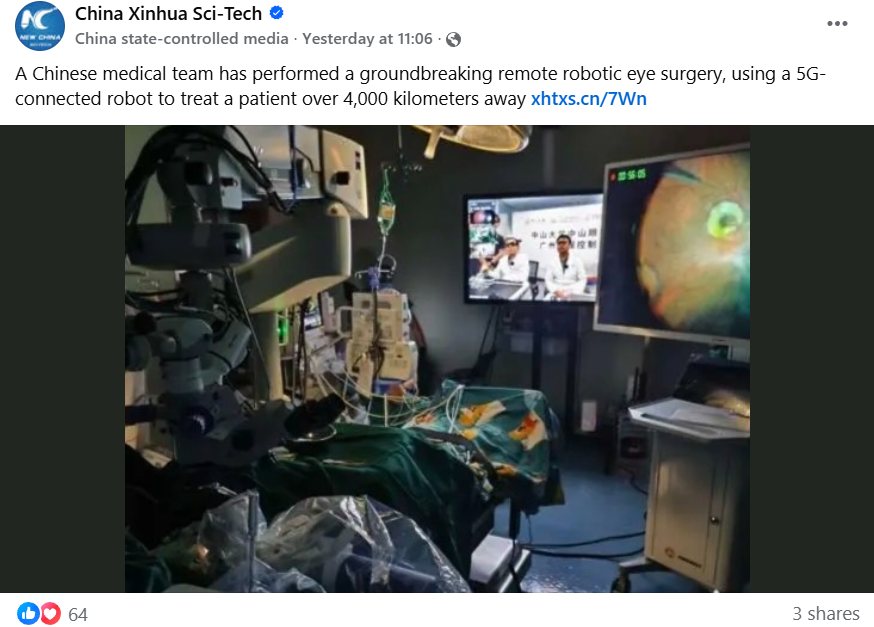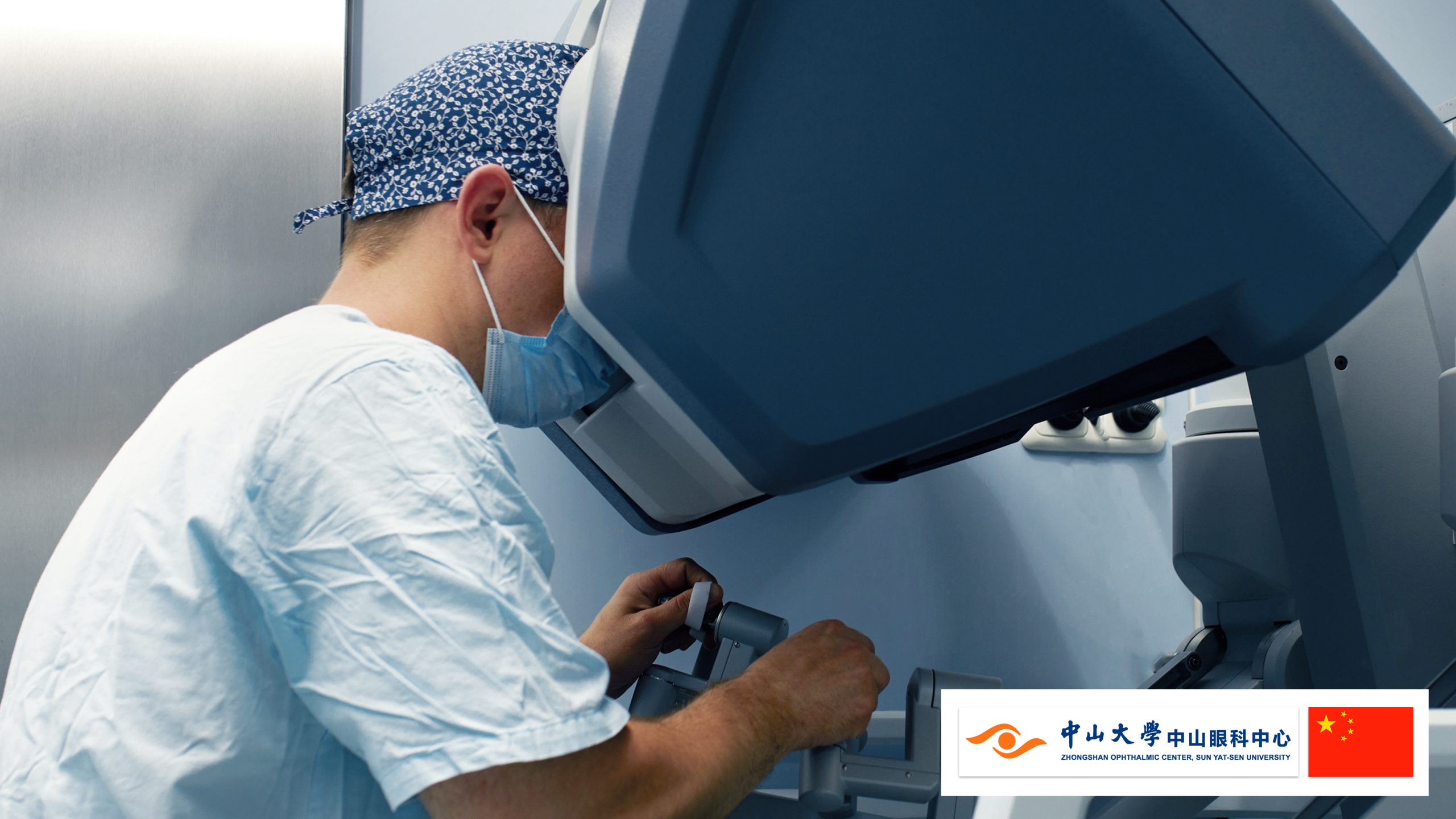Robotic precision goes long-distance as surgeons pull off a 4,200-km subretinal first.
Ophthalmologists in China have taken remote subretinal surgery to a whole new level…literally, thousands of kilometers apart.
A team from Zhongshan Ophthalmic Center of Sun Yat-sen University (China) successfully performed the world’s first remote robotic subretinal injection surgery, connecting specialists more than 4,200 kilometers apart—from Guangzhou to Urumqi—via an independently developed 5G ophthalmic surgical robot.

The procedure marks a pivotal leap for high-precision remote eye surgery, demonstrating how advanced ophthalmic care could soon bridge vast regional divides and reach underserved communities.
READ MORE: Gene Therapy Shows Promise for AIPL1-Associated Retinal Dystrophy in Children
Precision surgery across 4,200 kilometers
Led by Prof. Lin Haotian, director of the Zhongshan Ophthalmic Center, and Prof. Yang Bo of the Xinjiang Production and Construction Corps Hospital, the procedure showcased the promise of real-time, long-distance surgical collaboration.
READ MORE: Researchers Develop Head-Mounted Robotic System for Retinal Surgery
A robotic microneedle in Xinjiang was guided in real time by Prof. Lin’s team in Guangzhou. Using a high-speed 5G network, the surgeons remotely navigated the lesion site, performed a micron-level subretinal injection, and completed the entire procedure in under seven minutes.
Before surgery, both teams meticulously planned the injection path, dosage and depth to ensure safety and precision. Throughout the procedure, the connection remained stable, with crystal-clear imaging and responsive robotic control, demonstrating the system’s reliability and synchronization under real-world conditions.
According to Prof. Lin, the success of the operation represents a shift from “feasibility” to “practicality” in China’s pursuit of remote, intelligent eye care.
READ MORE: Coronavirus Side Effects: Treatment Regimens and Missed Anti-VEGF Injections
Expanding access to specialized eye care
The success of this cross-regional operation highlights the potential of robotic-assisted ophthalmology to help balance access to specialized care. China has one of the world’s largest populations of visually-impaired patients, many of whom live far from major medical centers.
With innovations like the 5G ophthalmic surgical robot, Dr. Lin envisions a future where advanced ophthalmic care is not bound by geography but instead becomes “mobilizable, shareable and replicable” across regions, enabling “more grassroots patients to benefit from technological innovation in the following month.”
READ MORE: From Rare to Repair: Inherited Retinal Disease Therapies Advance at Speed
Next step for remote surgery
This breakthrough builds on Prof. Lin’s earlier success in June 2023—later published in Advanced Sciences—when his team performed the world’s first remote micron-level eye surgery on rabbits using a similar robotic system.
Now, with clinical success in humans, the technology has progressed from laboratory validation to real-world application. It’s a milestone that hints at a future where precision eye care can transcend borders, networks, and perhaps one day, even time zones.
Editor’s Note: This content is intended exclusively for healthcare professionals. It is not intended for the general public. Products or therapies discussed may not be registered or approved in all jurisdictions, including Singapore.
